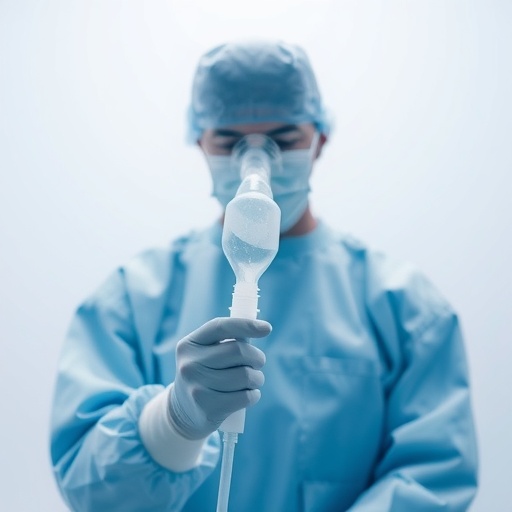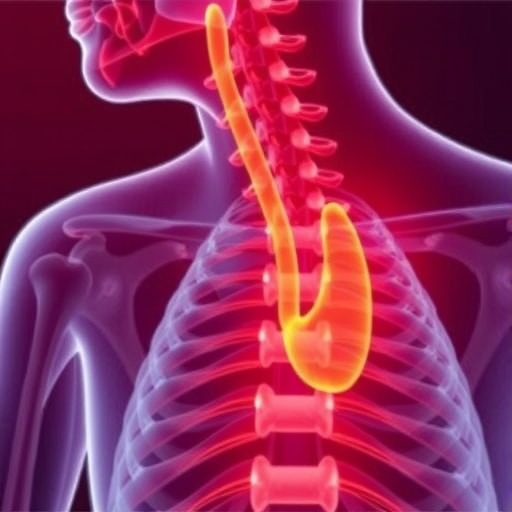
In the realm of minimally invasive surgery, clear visibility is paramount to surgical success and patient safety. One of the persistent challenges faced by surgeons during laparoscopic procedures is the interference caused by surgical smoke. Generated primarily by electrocautery devices and ultrasonic scalpels, this smoke comprises particulate matter (PM) that not only obscures the operative field but also presents potential health hazards to the surgical team. Addressing this dual challenge, a pioneering study published in BioMedical Engineering OnLine introduces an innovative approach that utilizes nebulization technology to effectively clear surgical smoke, thereby enhancing laparoscopic visibility and safety.
Surgical smoke has long been identified as a significant obstacle in laparoscopic surgeries. The smoke is laden with particulate matter of various sizes, including PM1.0, PM2.5, and PM10, which can reduce visual clarity and increase the operative time due to frequent interruptions for smoke evacuation. Beyond visibility concerns, the inhalation of these fine particles poses documented health risks, encompassing respiratory irritation and long-term pulmonary conditions. Traditional methods of surgical smoke management typically revolve around evacuation systems that largely rely on suction or filtration. However, these methods have limitations in effectiveness, especially in rapid clearance and dealing with ultrafine particles.
The innovative solution explored in the recent study involves the application of nebulization – a technique widely known for delivering medication deep into the respiratory tract by breaking fluids into fine mist particles. The research team hypothesized that nebulization could foster the deposition and aggregation of smoke particulate matter, facilitating quicker and more effective clearance from the laparoscopic field. To test this, they engineered a novel nebulizer specifically designed for the surgical environment, characterized by a spray cone angle of approximately 70 degrees and generating aerosol particles with a median size of about 25 micrometers.
The researchers conducted in vivo experiments using twelve rabbits, dividing interventions into nebulization and elimination groups with six subjects each. Surgical smoke was generated using two common instruments: an electrocautery hook and an ultrasonic scalpel, which were applied to different tissue types. The levels of particulate matter produced were meticulously measured, focusing on key indicators: PM1.0, PM2.5, PM10, and total suspended particulates. This comprehensive analysis enabled a comparative quantification of particulate emissions, illuminating the differential impact of both surgical tools.
Quantitative results revealed that the electrocautery hook produced significantly higher particulate concentrations compared to the ultrasonic scalpel. This disparity was more pronounced across various tissue types with the electrocautery hook, whereas only PM1.0 levels showed differences when using the ultrasonic scalpel on different tissues. Importantly, the baseline particulate concentrations before any treatment were statistically similar between the nebulization and traditional elimination groups, ensuring the validity of comparative outcomes.
The cornerstone finding of this study was the efficacy of nebulization in expediting the clearance of surgical smoke. The nebulizer restored laparoscopic visibility within eight seconds—a remarkable improvement over existing elimination techniques. The application of nebulization resulted in a significantly greater reduction in particulate matter, particularly for PM1.0, the ultrafine particles most detrimental to respiratory health and visibility. After treatment, the concentrations of particulate matter remained significantly lower in the nebulization group, highlighting its superior clearance capacity.
From a surgical workflow perspective, this advancement promises to minimize interruptions caused by impaired visibility, thereby potentially reducing operative times and improving precision. The rapid restoration of a clear visual field can alleviate one of the chief frustrations surgeons encounter during laparoscopic procedures, enhancing both procedural efficiency and ergonomics.
Health benefits associated with surgical smoke clearance are equally compelling. Given the well-established risks of exposure to fine particulate matter in operating rooms, especially over prolonged periods, the reduction of airborne particles through nebulization could diminish respiratory hazards for surgical teams. This approach may represent a paradigm shift in occupational safety within surgical environments, aligning with growing demands for enhanced protective measures.
Technically, the study underscores the significance of particle size and spray dynamics in designing clearance systems. The nebulizer’s 70-degree spray cone angle allows for broad dispersal within the confined laparoscopic cavity, ensuring that aerosolized droplets interact optimally with smoke particulates to promote aggregation and subsequent precipitation out of the visual pathway.
While the study’s animal model provides robust initial data, the translation of nebulization technology into human laparoscopic surgery will require further clinical trials. Considerations such as compatibility with existing laparoscopic instruments, integration into operating room workflows, and safety assessments for nebulized fluid exposure need to be addressed.
This research opens avenues for multidisciplinary collaboration, marrying biomedical engineering with surgical practice to innovate problem-solving approaches. Beyond laparoscopic surgery, the principles of particulate clearance through nebulization may be applied to other medical fields where smoke or particulate matter compromises clarity or safety.
In conclusion, the introduction of nebulization technology presents a transformative solution to the longstanding challenge of surgical smoke clearance in laparoscopic procedures. By enhancing visibility rapidly and reducing particulate exposure, this approach not only facilitates surgical precision but also advocates for improved occupational health standards. As minimally invasive surgeries continue to proliferate, such technological innovations will be crucial in refining operative environments and outcomes for patients and healthcare professionals alike.
Subject of Research: Surgical smoke clearance during laparoscopic surgery using nebulization technology
Article Title: Enhancing laparoscopic visibility: efficient surgical smoke clearance innovatively using nebulization technology
Article References:
Lin, X., Fan, Q., Li, R. et al. Enhancing laparoscopic visibility: efficient surgical smoke clearance innovatively using nebulization technology. BioMed Eng OnLine 24, 65 (2025). https://doi.org/10.1186/s12938-025-01395-4
Image Credits: AI Generated
DOI: https://doi.org/10.1186/s12938-025-01395-4
Tags: advancements in biomedical engineering for surgical proceduresbenefits of nebulization in surgical environmentsefficient smoke clearance solutions in surgeryelectrocautery and ultrasonic scalpel smokeenhancing patient safety during surgeryimproving visibility in minimally invasive surgeryinnovative nebulization technology for smoke clearancelimitations of traditional smoke evacuation methodsparticulate matter health risks in surgeryreducing operative time in laparoscopic surgeriesrespiratory health hazards for surgical teamssurgical smoke management in laparoscopic surgery





